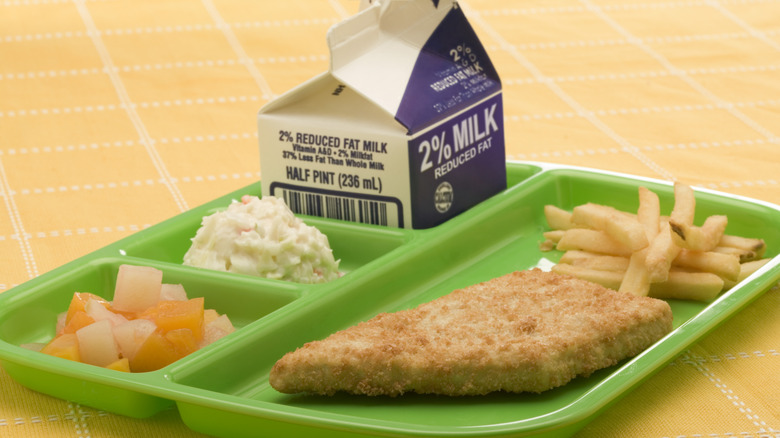USDA Plans To Cut Back On Salt And Added Sugar In School Lunches
School lunches in the U.S. are surprisingly controversial. In the past year, the New York Post reported on one father's Facebook post that went viral for featuring a photo of his son's less-than-appealing lunch, which was subsequently compared unfavorably to meals served to inmates at Rikers Island.
Also in the last year, Slate addressed the difficulties facing schools and families in the wake of expiring pandemic-era subsidies that made school lunches free for all students, regardless of income level. Supply chain issues coupled with food inflation challenge school systems' abilities to meet student needs for nutritious meals at affordable prices.
NPR reported on Sonny Perdue, Agriculture Secretary under Donald Trump, whose enthusiastic rollback of healthy school lunch initiatives by Michelle Obama were designed to "Make School Meals Great Again." The Trump administration's measures relaxed requirements that schools offer whole grains, limit sodium, and offer fat-free milk to students.
Recently, at the USDA Conversation on Healthy School Meals Roundtable, Agriculture Secretary Tom Vilsack announced proposed changes to the nutrition standards that govern school meals, aimed at making those meals healthier, while recognizing the school systems that improve nutrition and providing grants for school systems in need.
A gradual adjustment
The USDA is responsible for setting the standards for what constitutes a healthy meal served by schools, according to CNN. The USDA's new proposed measures will limit the added sugars in some prepackaged foods like muffins, yogurt, and cereal, while — at least for now — permitting flavored milk with "reasonable limits on added sugars." And new limitations on sodium levels will be phased in over the next few school years, with the hope that a gradual adjustment will limit pushback on the new guidelines.
The new USDA guidelines will also strengthen efforts to promote farm-to-school food sourcing, as we've already seen in programs like the one in Minnesota, in which the USDA and states partner to bring in regional food producers, providing vital revenue to local farmers and ranchers, while simultaneously providing healthy, fresh foods to local school systems.
The new USDA proposal was announced by Agriculture Secretary Tom Vilsack who said the guidelines are intended to "improve the health and welfare of our children" and also pointed out that the proposed measures were developed based on listening sessions that invited input from parents, school food administrators, food suppliers, and nutritional experts, according to CNN.

